When you are in the market for a projector, one of the biggest decisions you have to make is whether to go with a 1080p or 4k model. Both types of projectors have their pros and cons, and it can be difficult to decide which is the right choice for you. This article will discuss the differences between 1080p and 4k projectors and help you decide which type is best for your needs.
What is a 4K projector?
A 4K projector is a type of digital projector that uses 4K resolution – which measures around 8.8 million pixels – for displaying images and videos. This far surpasses the 1.3-2 million pixels found on traditional Full HD projectors, resulting in an incredibly sharp picture with more detail and clarity than ever before.
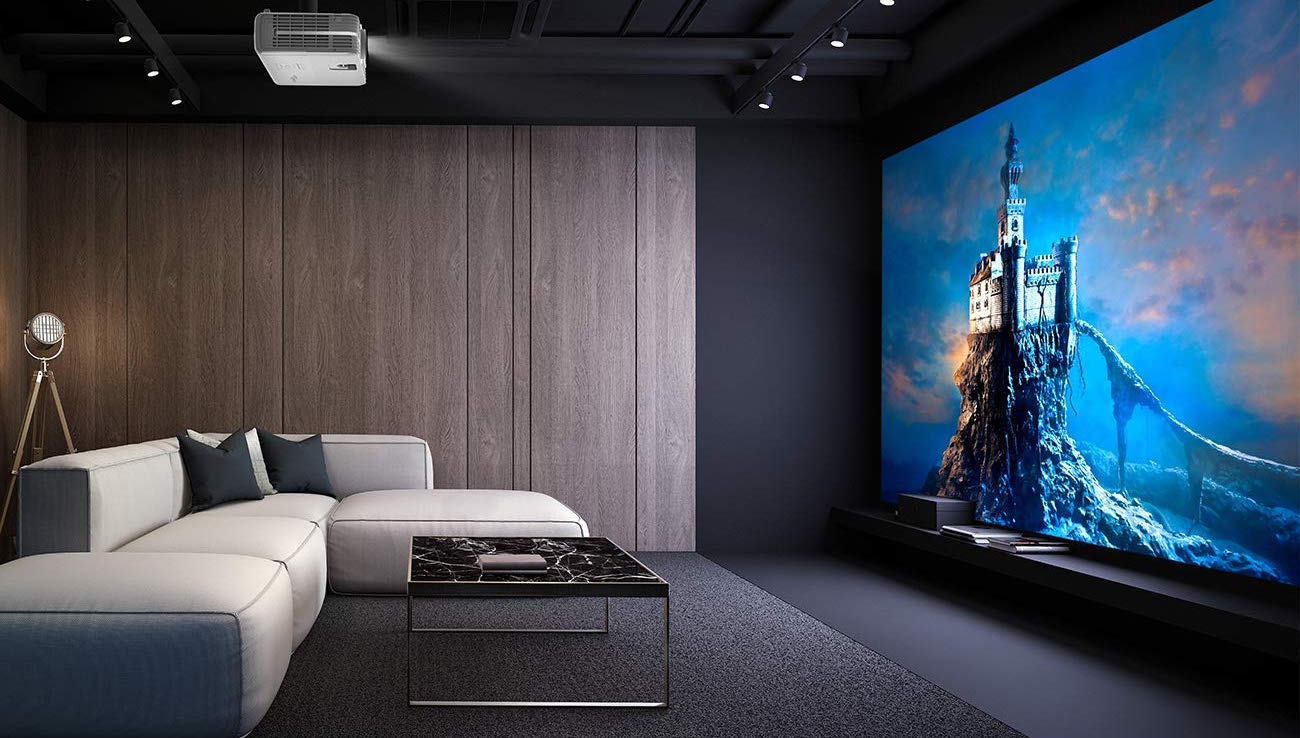
Thanks to their superior image quality, 4K projectors are often used in professional settings like movie theaters as well as for home theater setup for gaming purposes. They are also becoming increasingly popular among consumers who want to experience the highest possible levels of realism within their home entertainment systems.
Not only do 4K projectors provide an unbelievable level of detail, but they also offer features like advanced contrast ratio, wider color gamut, and HDR support, allowing for more vibrant colors and a truly immersive viewing experience. When paired with the right media source, 4K projectors can bring movies and TV shows to life like never before.
When shopping for a 4K projector, it’s important to consider factors such as brightness level, throw distance, connectivity options, and price. Additionally, you will want to make sure that your projector includes the latest HDMI 2.0 ports to take full advantage of all the available 4K content.
By doing your research beforehand, you can ensure that you select a model that is best suited to your needs and budget.
In conclusion, 4K projectors offer an unparalleled level of detail and realism that simply cannot be matched by traditional Full HD projectors. With their advanced features and compatibility with the latest 4K content sources, they are ideal for anyone looking to create a truly immersive home theater experience. So if you’re ready to take your home entertainment system to the next level, then a 4K projector might be just what you need [1]!
What is a 1080p projector?
A 1080p projector is a high-definition digital projector that is capable of displaying images with a resolution of 1920 x 1080 pixels. This type of projector uses either LCD or DLP technology to project the image onto a screen, and because it has such an impressive resolution, it can produce crystal clear imagery for gaming, sports, movies, and more.
In addition, many 1080p projectors feature 3D capabilities to provide an even more immersive viewing experience. With their superior display capabilities, 1080p projectors are becoming increasingly popular among home theater enthusiasts who want to get the most out of their movie-watching experience.
Because of their higher resolution, 1080p projectors can produce sharper, more detailed images than 720p and lower-resolution projectors. This makes them ideal for watching movies with a large screen size as the extra detail will make the picture look far more lifelike.
They also do notably better in brightly lit rooms as they have better contrast ratios due to their higher resolution. Although 1080p projectors tend to be more expensive than lower-resolution models, they are often worth the additional cost if you plan to use your projector primarily for gaming or home theater applications.
Additionally, these projectors tend to be larger and heavier than their 720p counterparts, making them more difficult to transport or install. When deciding whether a 1080p projector is right for you, it’s important to consider your needs and budget before making a purchase decision [2].
4K vs. 1080p Projectors: Which is the Better Projector For You?
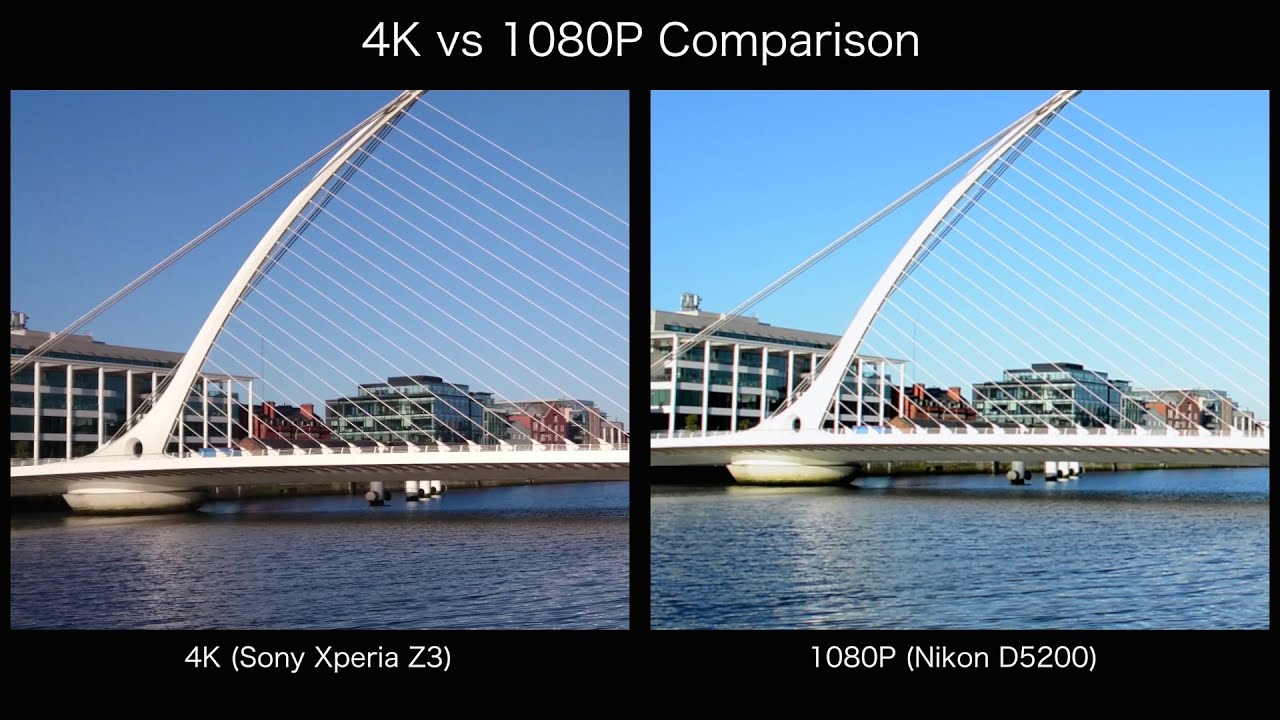
Resolution
The resolution of a projector is one of the most important factors to consider when deciding whether 4K or 1080p projectors are best for you. 4K ultra-high definition projectors offer a much higher pixel count than 1080p projectors, providing a sharper, more detailed image. The extra pixels make it easier to view high-resolution images and videos without any blurring or distortion. On the other hand, 1080p has fewer pixels and can still produce an acceptable picture quality when viewing standard HD content.
Brightness
Another factor that affects which type of projector is right for you is brightness. Generally speaking, 4K projectors have brighter output than their 1080p counterparts. This means they require less ambient light in the room and can still produce a clear image. Although 4K projectors are brighter than 1080p projectors, they don’t always provide the same level of brightness as some of their higher-end counterparts.
Contrast Ratio
Next, the contrast ratio is something you should take into account when making your decision. Projectors with a higher contrast ratio provide better black levels and more lifelike images. 4K projectors typically have a much higher contrast ratio than 1080p projectors, which can make a big difference in picture quality.
Inputs/Outputs
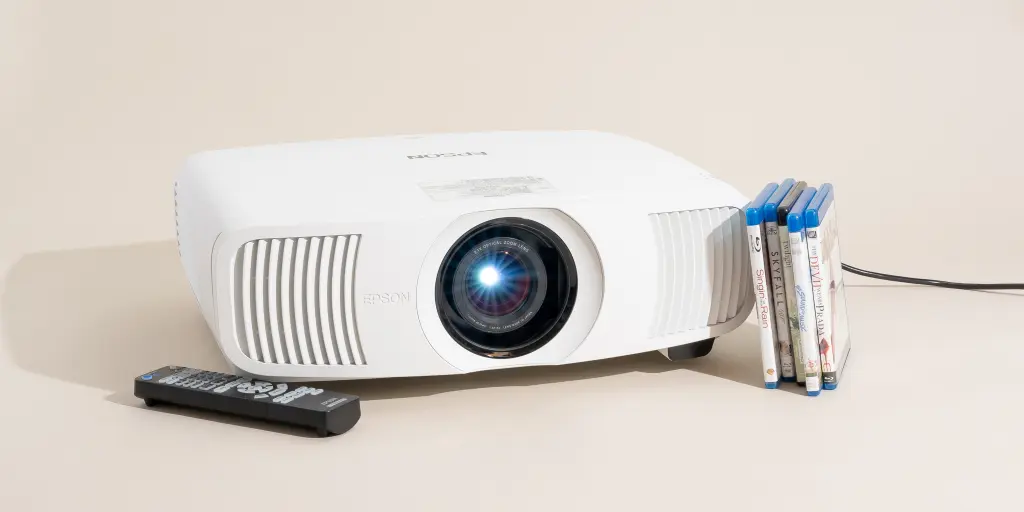
It’s important to consider the inputs and outputs offered by each type of projector. 4K projectors are often equipped with more ports than 1080p models, allowing for easier connections to gaming consoles or other devices. Additionally, some 4K projectors offer advanced features such as 3D support or motion interpolation technology.
Cost
The cost is another important factor to consider when deciding between 4K and 1080p projectors. 4K projectors tend to be more expensive than 1080p because of their improved resolution and increased brightness output. Additionally, depending on the model you choose, you may have to pay extra for features such as HDMI input compatibility or 3D capability. On the other hand, 1080p projectors are usually cheaper while still providing decent picture quality when viewing standard HD content.
Pixels Per Inch (PPI)
Another important factor to consider when looking at 4K and 1080p projectors is the pixels per inch (PPI). This measurement determines how many pixels are displayed in a given area. Generally speaking, 4K projectors have higher PPI than their 1080p counterparts, resulting in sharper images with more detail.
Color Accuracy
The color accuracy of a projector should also be taken into account when making your decision. 4K projectors tend to have better color accuracy than 1080p models due to their higher resolution and a greater number of pixels. Additionally, some 4K projectors offer advanced color management features that can help ensure accurate colors in any lighting situation.
Energy Requirements
The energy requirements of each type of projector should be considered. 4K projectors can consume a lot of power, resulting in higher electricity bills. On the other hand, 1080p projectors are more energy-efficient and can help reduce electricity costs.
Audio Quality
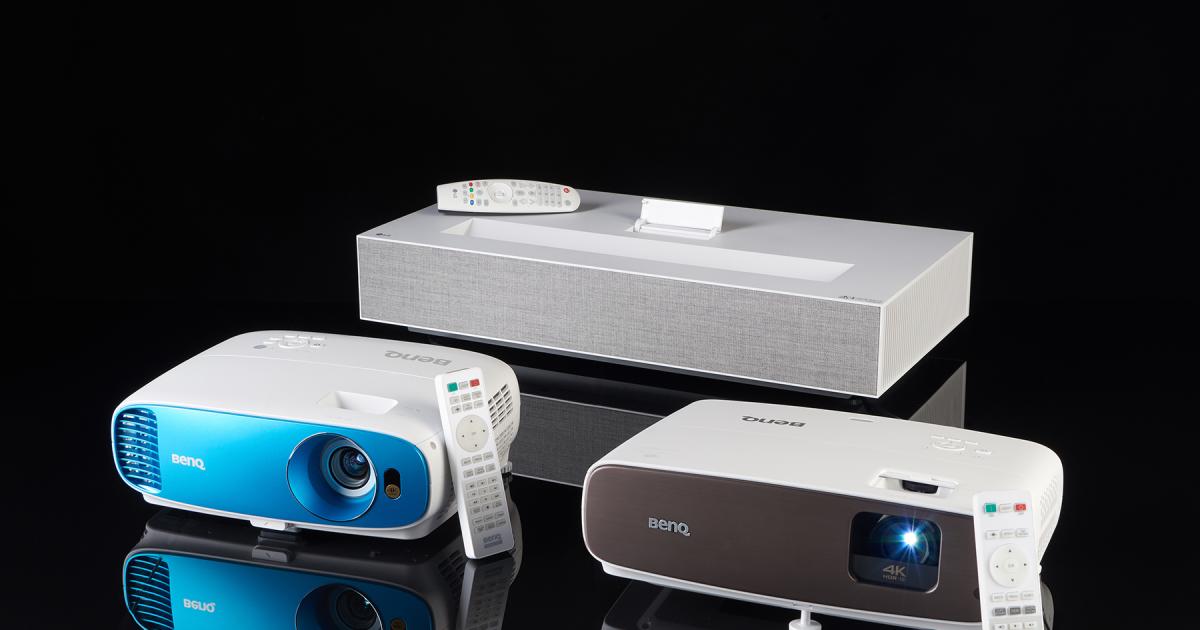
The audio quality of a projector should be taken into account. 4K projectors typically have better audio than their 1080p counterparts thanks to built-in speakers and advanced sound processing capabilities. Additionally, some 4K models offer wireless connectivity for streaming audio from other devices.
3D capabilities
3D capabilities should be taken into account when making your decision. Many 4K projectors offer 3D support, allowing you to enjoy movies and games in immersive three-dimensional environments. However, not all 1080p models are capable of this feature.
Streaming Content
If you plan on streaming content, it’s important to consider the streaming capabilities offered by each type of projector. 4K projectors offer better resolution and faster loading times than 1080p models when it comes to streaming content from online services like Netflix or Hulu.
Special Features
Finally, some projectors offer special features that can greatly enhance your viewing experience. For example, 4K projectors often come with features like motion interpolation or HDR support for an even more immersive viewing experience [3].
How to use Projectors?

Using a projector can be a great way to help facilitate presentations and other visual learning activities. However, there are a few things to keep in mind when you’re using one. Here are some tips and steps for setting up and using projectors for classroom and conference presentations:
Step 1: Choose the right size projector for your needs – Projector size will depend on the type of presentation, number of people attending, room size, etc. If you have a smaller room, go with something lightweight and small like an LED projector, while larger rooms may require more powerful models such as LCD or DLP projectors.
Step 2: Make sure all connections are secure – Connect all cables securely so that they won’t become loose or disconnected during the presentation. Double-check that each connection is firmly in place before starting your presentation.
Step 3: Connect to a power source – Make sure the projector is plugged into an electrical outlet and the correct type of cable is used for the connection. In addition, if you plan on using a laptop or other device, make sure it is also plugged into a power source.
Step 4: Set up the screen – If you are using a projection screen, set it up so that everyone can see clearly from their seats in the room.
Step 5: Configure display settings – Adjust brightness, contrast, and color settings on the projector according to your needs and preferences. This will help ensure that your presentation looks the way you intend it to.
Step 6: Test it out before the presentation – Before starting your presentation, make sure to test your projector by displaying a few slides or images. This will help you identify any problems that may arise during the actual presentation.
Step 7: Start presenting and adjust accordingly – Once everything is set up, begin your presentation and adjust settings as needed along the way. Keep an eye on how others in the room are reacting and adjust brightness levels if necessary so everyone can see what’s being shown.
Step 8: Make sure to turn off the projector when done – After completing your presentation, be sure to turn off the projector and unplug all cables before leaving the room. This will help ensure that your projector remains in good condition for future use.
Following these steps will help make sure your presentation goes smoothly and everyone enjoys the experience.
Final Thoughts: What is better: 4K vs. 1080p Projectors?
When deciding between 4K vs. 1080p projectors, it really depends on what you plan to use the projector for. For most people, a 1080p projector will be more than enough for everyday use and viewing movies or videos.
4K projectors are better suited for those who want superior image quality and clarity when watching movies or playing video games. They can also be used in business settings where high-detail visuals are required, such as displaying graphs and other data in presentations.
However, 4K projectors tend to be more expensive than their 1080p counterparts and require more powerful hardware to support them. So if you’re looking for a budget-friendly option that still delivers good picture quality, a 1080p projector is probably the way to go.
Whichever projector you choose, always make sure to follow the tips outlined above for setting up and using it properly. This will help ensure your presentations are successful and everyone enjoys the experience.
FAQ
What is the Best Distance for 4K Resolution Streaming?
For streaming 4K resolution video, a minimum of 25 Mbps is recommended to ensure a smooth, uninterrupted experience. However, it may depend on the type of content being streamed and the computer hardware used for streaming. It’s also important to note that higher bandwidths are ideal for streaming in 4K resolution, so make sure your internet connection is fast enough to support it.
Additionally, make sure to use an Ethernet cable instead of Wi-Fi if possible since this will provide you with a more reliable connection.
Finally, keep in mind that different providers may have different requirements regarding the necessary bandwidth needed for 4K resolution streaming.
What type of Internet connection do I need for 4K Streaming?
To stream 4K resolution video, you’ll need an internet connection that is capable of providing speeds of at least 25 Mbps. Even with this type of connection, the quality may still suffer if the computer hardware isn’t up to par or if the content being streamed requires higher bandwidths.
Additionally, it’s recommended to use an Ethernet cable instead of Wi-Fi due to its more reliable connection. Different providers have different requirements regarding the necessary bandwidth needed for 4K streaming, so make sure you know what your provider requires before attempting to stream in 4K.
What are some ways I can improve my 4K Streaming experience?

To maximize your 4K streaming experience there are a few things you should do:
- ensure that your internet connection can provide enough bandwidth (at least 25 Mbps).
- Use an Ethernet cable instead of Wi-Fi if possible.
- Make sure that your computer hardware is up to par with the type of content you’re trying to stream.
- Check with your provider to make sure that their requirements are met for streaming in 4K resolution. Following these steps will help ensure that your 4K streaming experience is a smooth one!
Are there other resolutions available besides 4K?
Yes, there are other resolutions available such as 1080p and 720p. Generally, these resolutions will require less bandwidth but may not be as sharp or clear compared to 4K resolution video. Additionally, some providers may not offer all types of resolutions, so it’s important to check with your provider before streaming any content.
What are the benefits of 4K Streaming?
Streaming in 4K resolution offers several advantages over other resolutions such as sharper images and more detailed visuals. Additionally, streaming in 4K allows you to take full advantage of modern displays that support this type of resolution. Another benefit is that it requires less buffering due to its high-quality content, making for a smoother experience overall.
Finally, if you’re watching on a large screen, then 4K is the best option since it will look much better than lower resolutions.
What is the best distance for 1080p streaming?
For streaming 1080p resolution video, a minimum of 8 Mbps is recommended to ensure a smooth experience. However, it may depend on the type of content being streamed and the computer hardware used for streaming. Additionally, higher bandwidths can provide even better streaming experiences in 1080p resolution so make sure your internet connection is fast enough to support it.
Finally, different providers may have different requirements regarding the necessary bandwidth needed for 1080p streaming, so make sure you know what your provider requires before attempting to stream in this resolution.
Are there any drawbacks to 4K Streaming?
Yes, there are some drawbacks associated with streaming in 4K such as needing more bandwidth than other resolutions (at least 25 Mbps). Additionally, some content may not be available in 4K resolution or may require higher bandwidths than the recommended 25 Mbps. Finally, it’s worth noting that although streaming in 4K looks great on larger displays, it may not look as good on smaller screens due to their limited resolution capabilities.
Do games look better in a 4K projector?
Yes, games do tend to look better in a 4K projector since it displays content with more clarity and sharper visuals. Additionally, 4K projectors can take advantage of HDR (high dynamic range) technology which provides even better image quality when playing certain games. Lastly, high-end graphics cards are recommended for gaming on a 4K projector to get the most out of the resolution.
Can you watch TV shows in 4K resolution on your projector?
Yes, you can watch TV shows in 4K resolution on your projector. However, it is important to make sure that your internet connection has enough bandwidth (at least 25 Mbps) and that the content provider supports streaming in 4K resolution.
Additionally, certain devices such as Blu-ray players or set-top boxes may be required for some providers to stream their content in 4K. It’s always a good idea to check with your content provider before attempting to stream in 4K resolution.
Is it worth upgrading from 1080p to a 4K projector?
It depends on your budget and needs. If you have the money to invest in a 4K projector, then it may be worth considering since it offers sharper images and more detailed visuals. Additionally, certain HDR content looks great on a 4K projector due to its high dynamic range capabilities.
However, if you are only streaming 1080p or lower resolution content, then a 4K projector may not make much of a difference in your viewing experience. Ultimately the decision will come down to what you want and how much you can spend on a new projector.
Do I really need a 4K projector?
Whether or not you need a 4K projector depends on the type of content that you are streaming and the size of your display. If you are streaming content in 4K resolution, then it is worth considering a 4K projector as it can provide sharper images and more detailed visuals. Additionally, if you have a large display, then 4K will look much better than 1080p or lower resolutions.
However, if you are only streaming in 1080p or lower resolution and/or have a small display, then there may be no benefit to upgrading to a 4K projector.
Is 1080p resolution good for a projector?
Yes, 1080p resolution is still a good choice for a projector as it can provide an excellent viewing experience. Additionally, most streaming services offer content in 1080p which means you don’t need to worry about needing higher bandwidths or special devices for streaming. However, if you want the sharpest images and most detailed visuals available then 4K may be worth considering. Ultimately the decision will come down to what your budget and needs are.
What’s the best resolution for a projector?
The best resolution for a projector depends on the size of your display, the type of content you are streaming, and your budget. Generally speaking, 4K resolution is the best choice as it provides sharper images and more detailed visuals. However, if you are streaming 1080p or lower resolution content and/or have a smaller display then 1080p may be good enough. Ultimately it comes down to what you need and how much you’re willing to spend on a new projector.
What is the difference between Full HD and 4K projector?
The main difference between Full HD and 4K projectors is the resolution. Full HD (1080p) has a resolution of 1920×1080 pixels while 4K (UHD) has a resolution of 3840×2160 pixels. This means that with 4K you can get sharper images and more detailed visuals when compared to 1080p. Additionally, some 4K projectors also take advantage of HDR technology which provides even better image quality when viewing certain content. However, if you are streaming in 1080p or lower resolutions then a 4K projector may not provide much benefit over a Full HD projector.
What accessories do I need for my projector?
The type of accessories you will need for your projector depends on the type of content you are streaming and the features of your projector. Generally speaking, most projectors will require a power cable, an HDMI cable for connecting to other devices, and a mount or stand if needed. Additionally, some providers may require certain devices such as Blu-ray players or set-top boxes to stream their content in 4K resolution. It’s always a good idea to check with your content provider before attempting to stream in 4K resolution.
Why are 4K projectors so expensive?
The high cost of 4K projectors can be attributed to the fact that they require more advanced components and technologies to produce ultra-high-resolution images. Additionally, the manufacturing process for creating these devices is much more expensive than Full HD (1080p) projectors. Furthermore, there are fewer suppliers of 4K projectors which can also contribute to their higher prices. Ultimately, if you want the best possible viewing experience then you may need to invest in a 4K projector which will come with a hefty price tag.
Are 4K projectors worth it?
Whether or not a 4K projector is worth it depends on what type of content you are streaming and how large your display is. If you are streaming content in 4K resolution and have a large display to show it off on, then a 4K projector may be worth it. Additionally, if you want the sharpest images and most detailed visuals available then 4K may be worth considering. However, if you are streaming 1080p or lower resolution and/or have a small display, then there may be no benefit to upgrading to a 4K projector.
Useful Video: 4k Projector VS. 1080p Projector — Can you see a difference?
Conclusion Paragraph
1080p and 4k Projectors have their pros and cons. 1080p is a great choice for general use, as it offers plenty of detail at a reasonable price point. However, if you want the best possible video experience, 4k projectors are the way to go. They offer ultra-high-resolution images that will make your movies and games look stunning. Ultimately, which type of projector is right for you depends on your budget and intended use. Whichever option you choose, you’ll be sure to get an amazing viewing experience with either one!
References
- https://www.projectorpeople.com/resources/4k-projectors.asp
- https://www.projectorreviews.com/projector-categories/1080p-projector/
- https://www.wemax.com/blogs/tutorials/4k-vs-1080p-projector-comparison-is-a-4k-projector-better-than-1080p





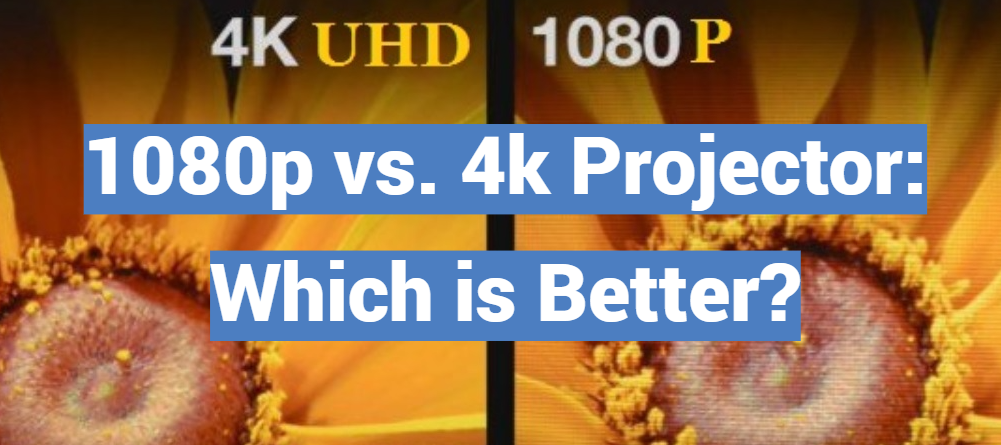

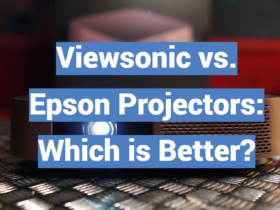
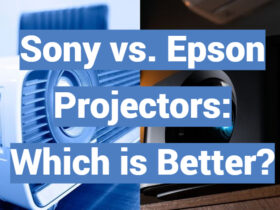
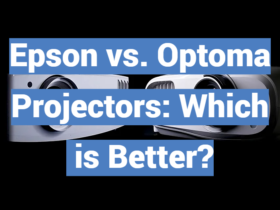
Leave a Review